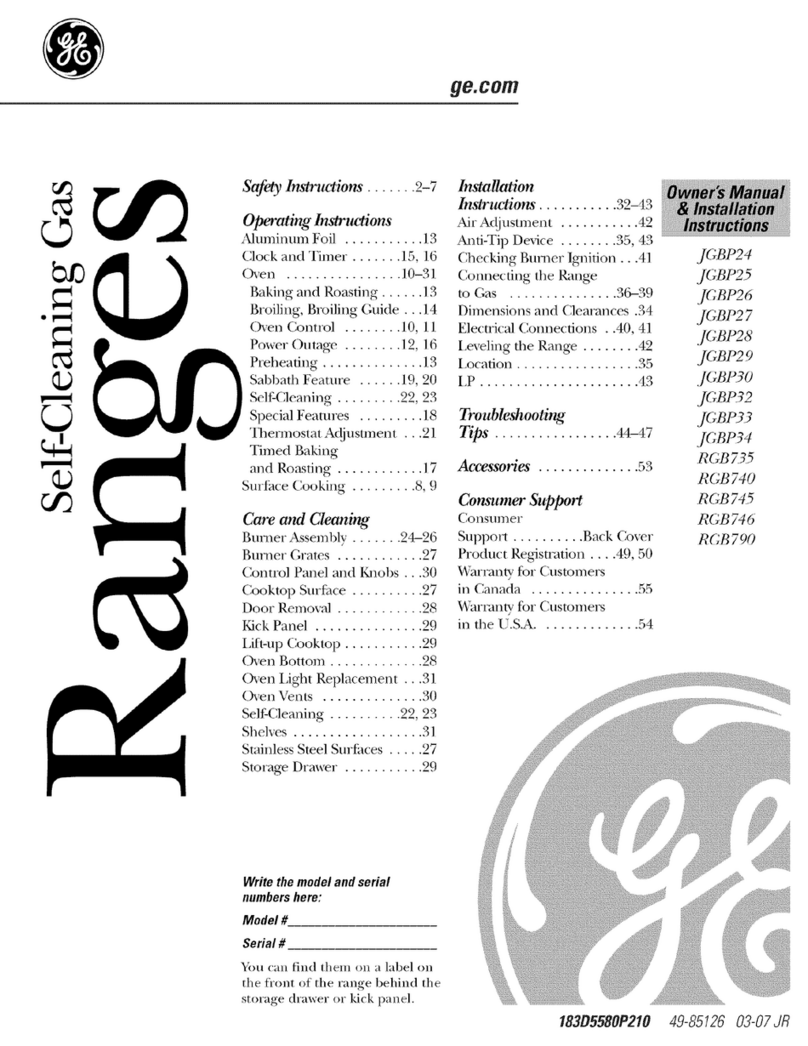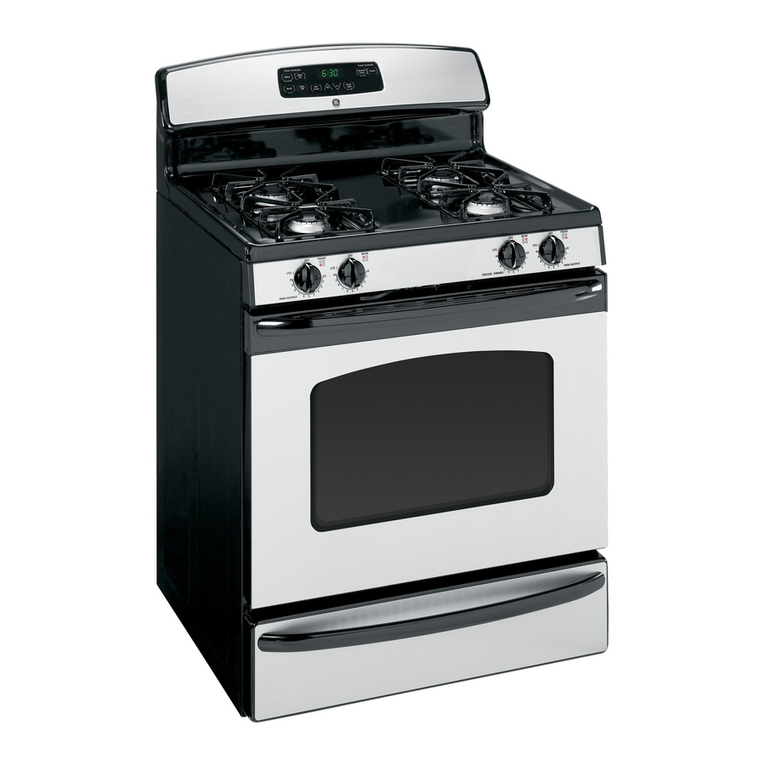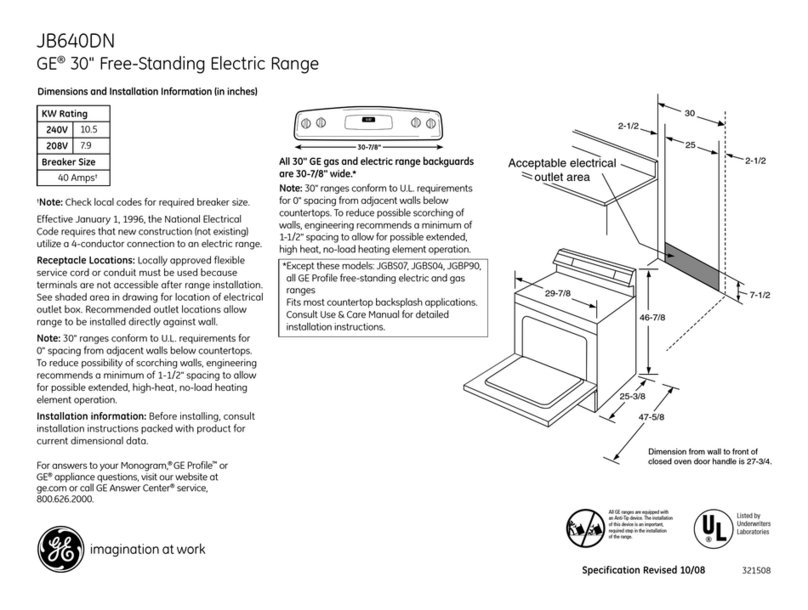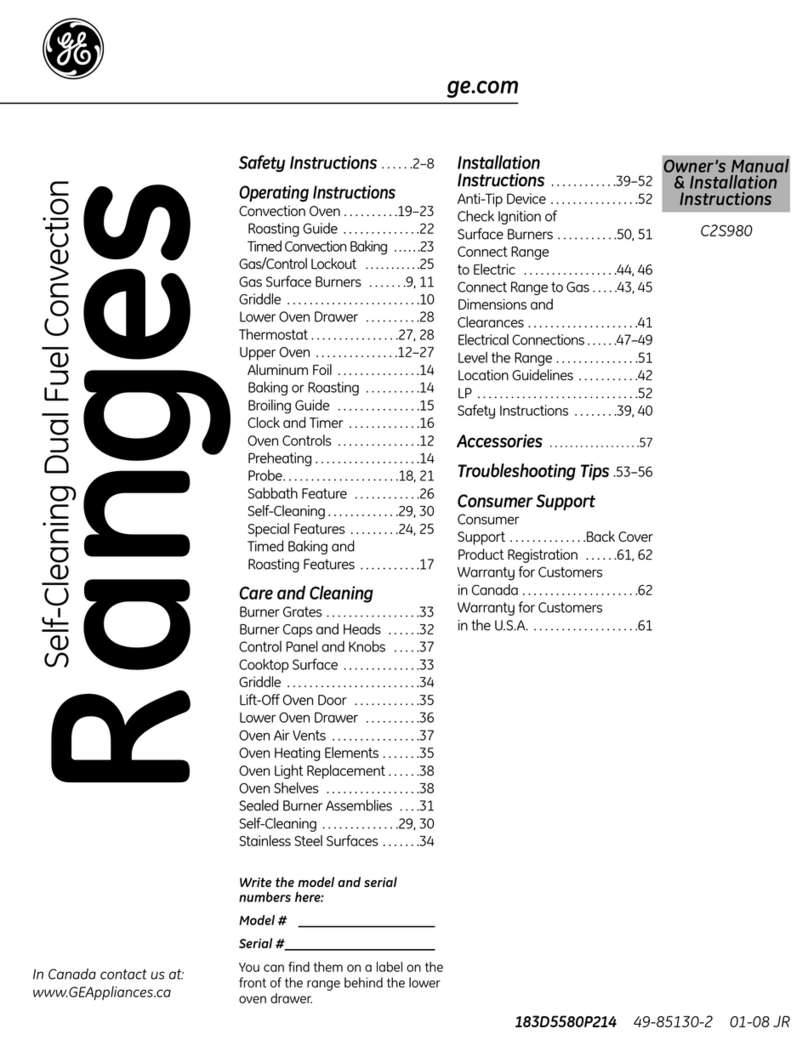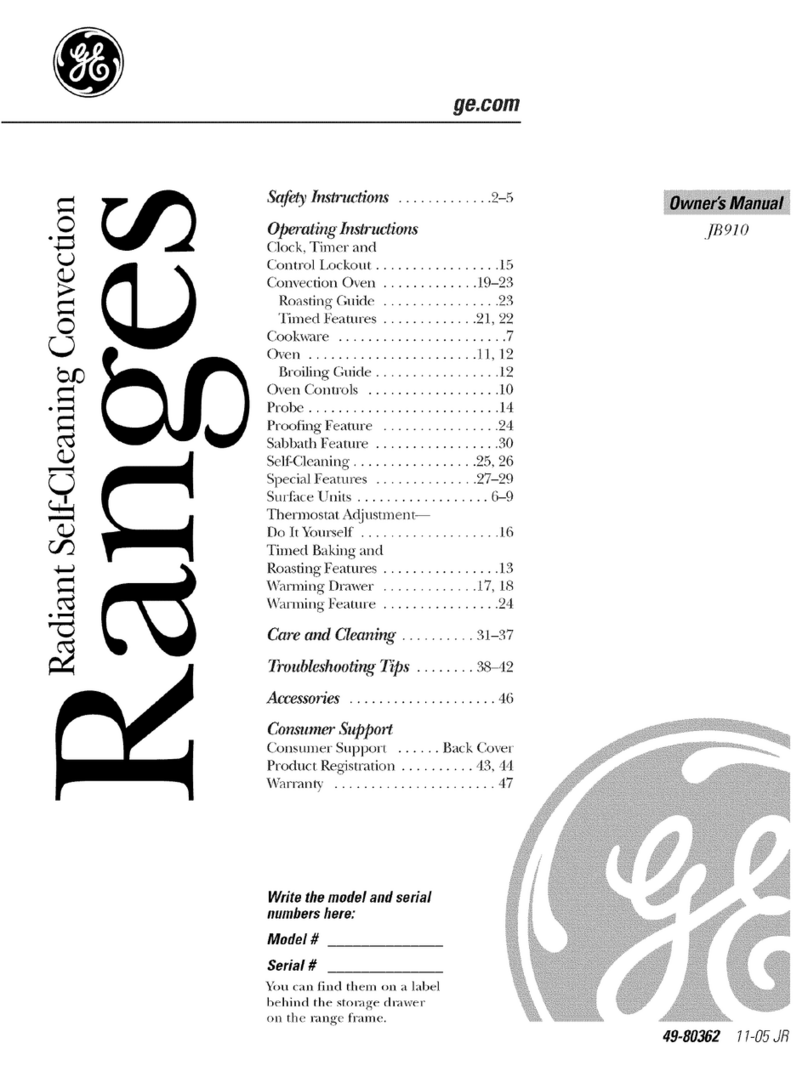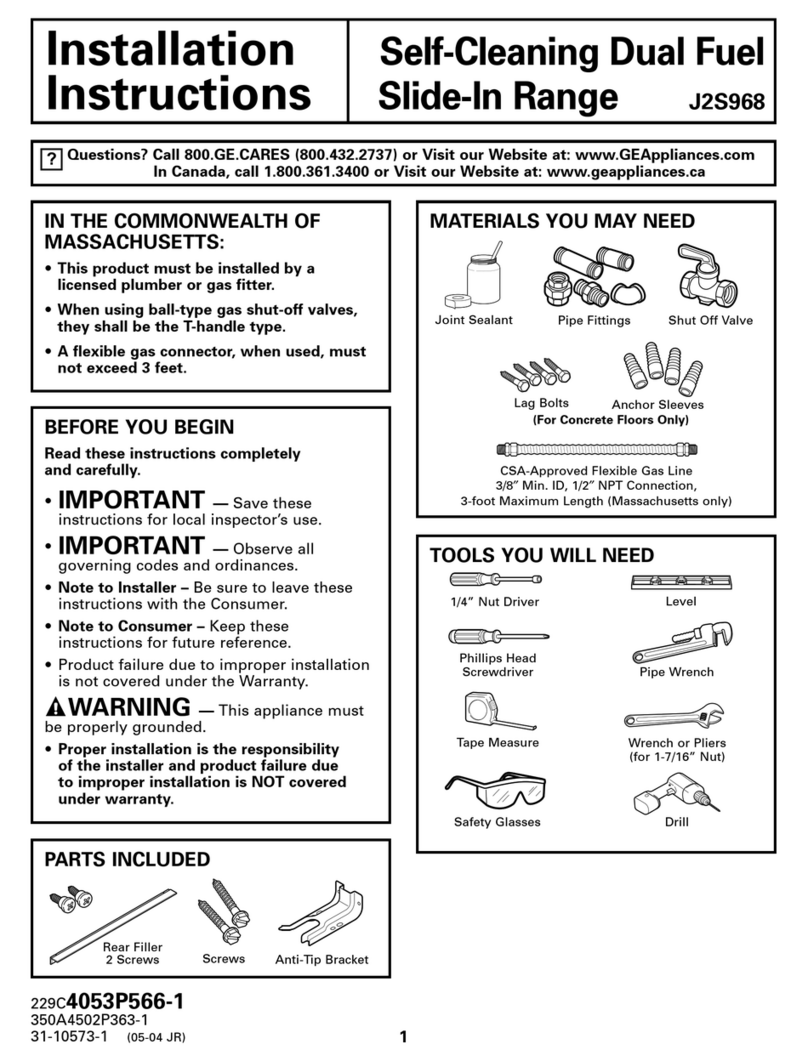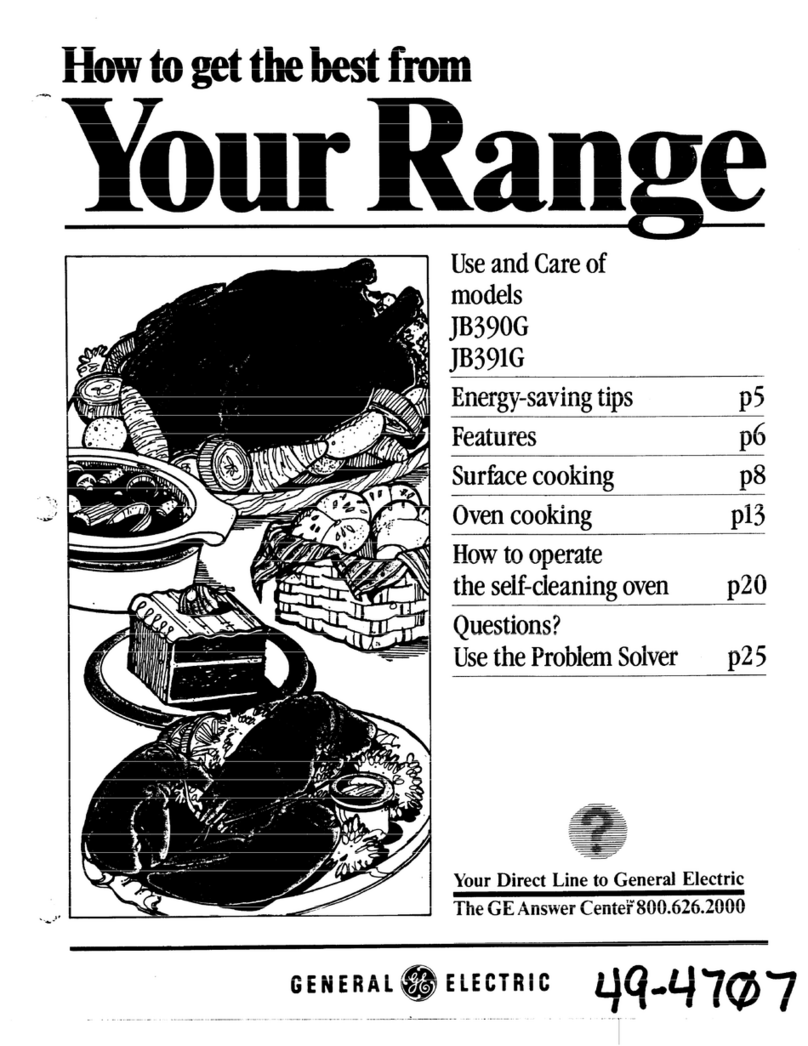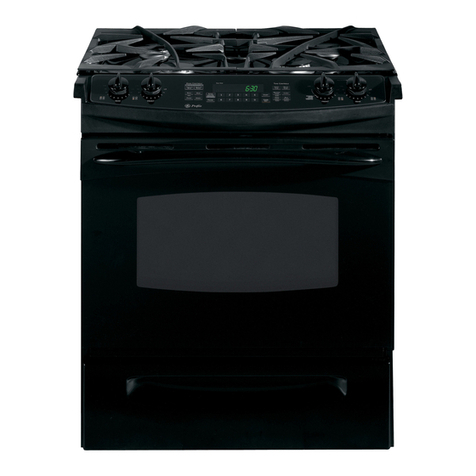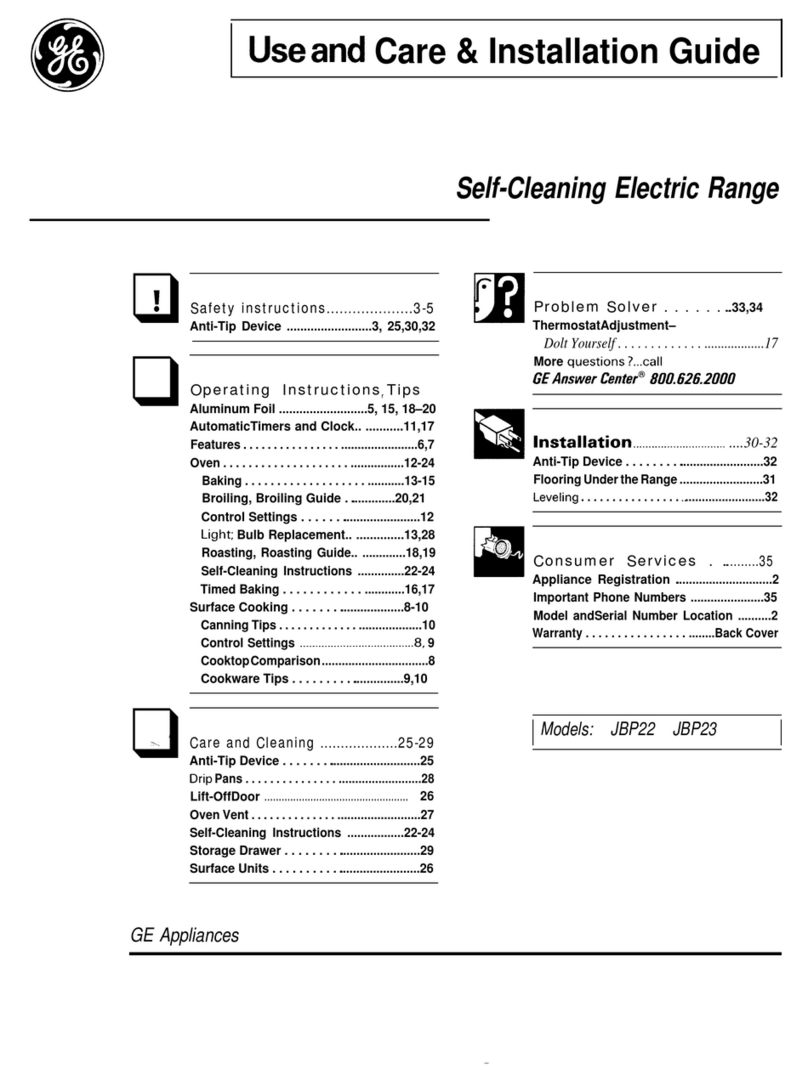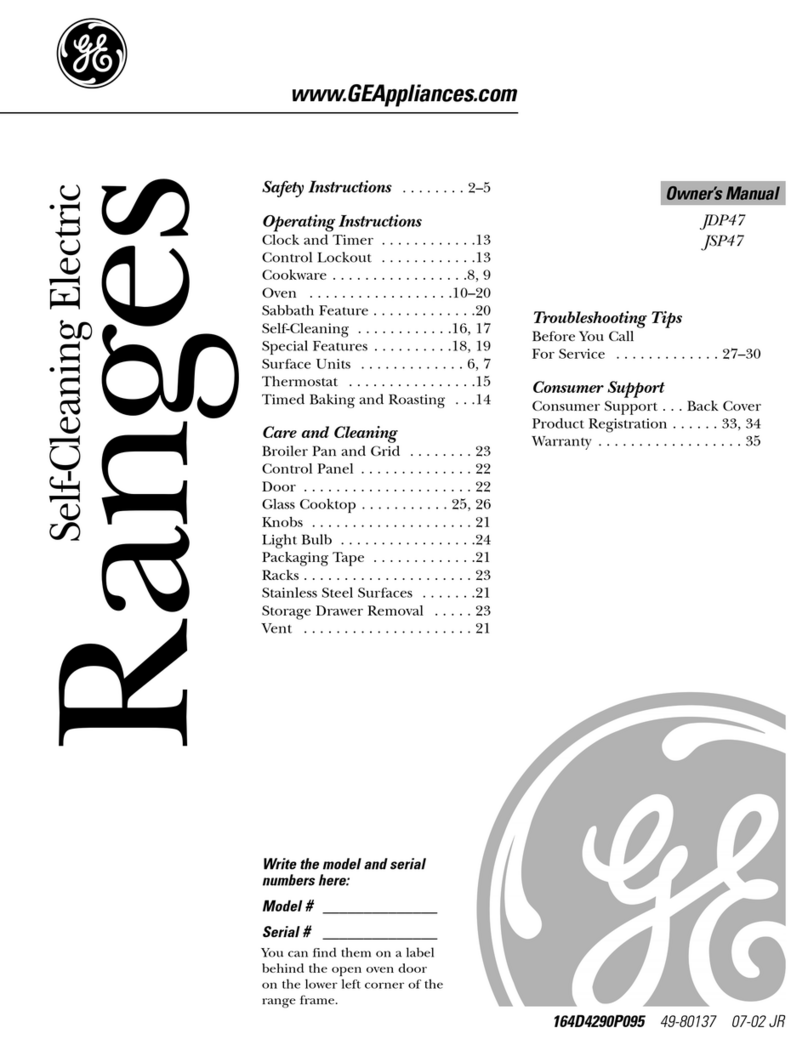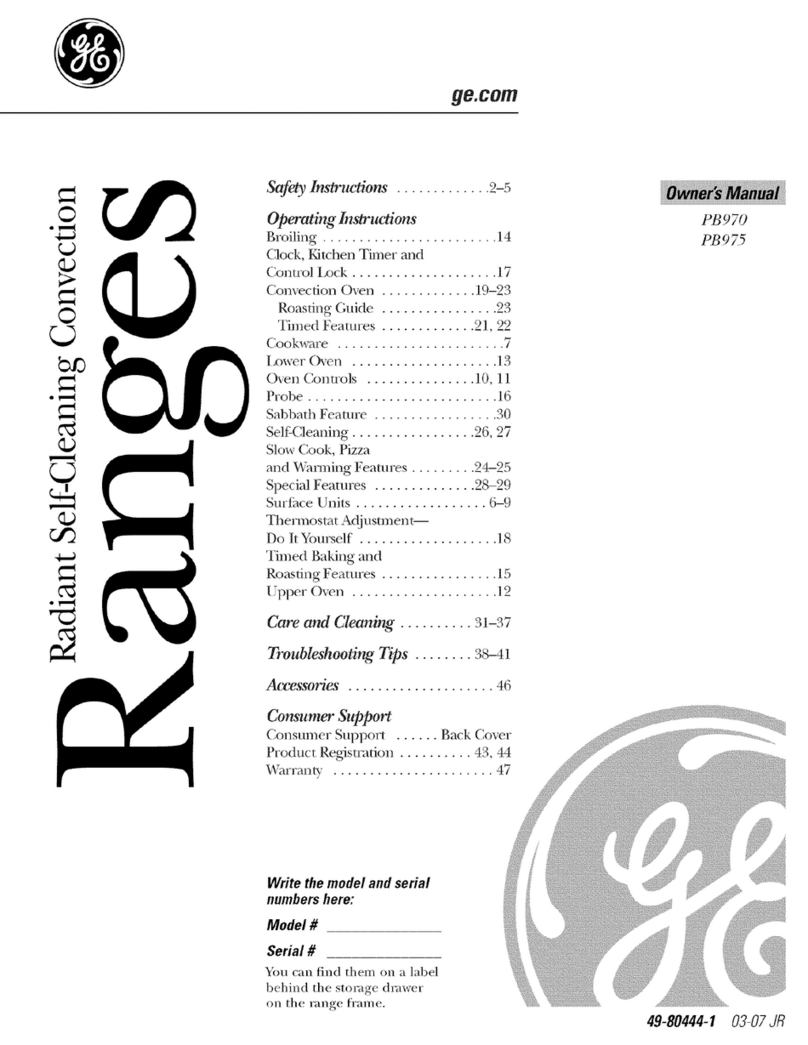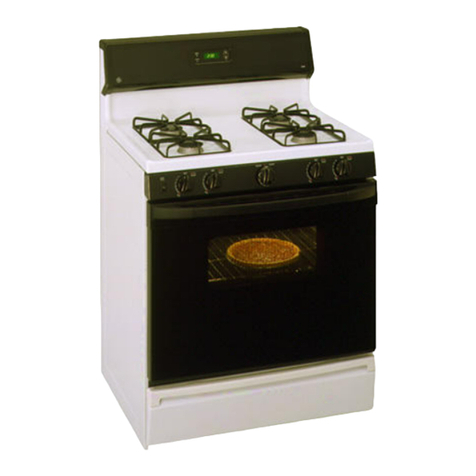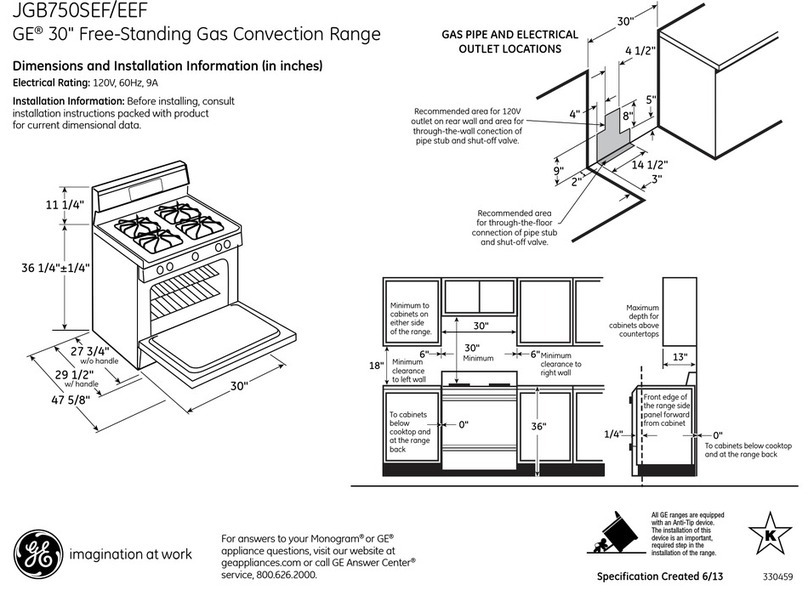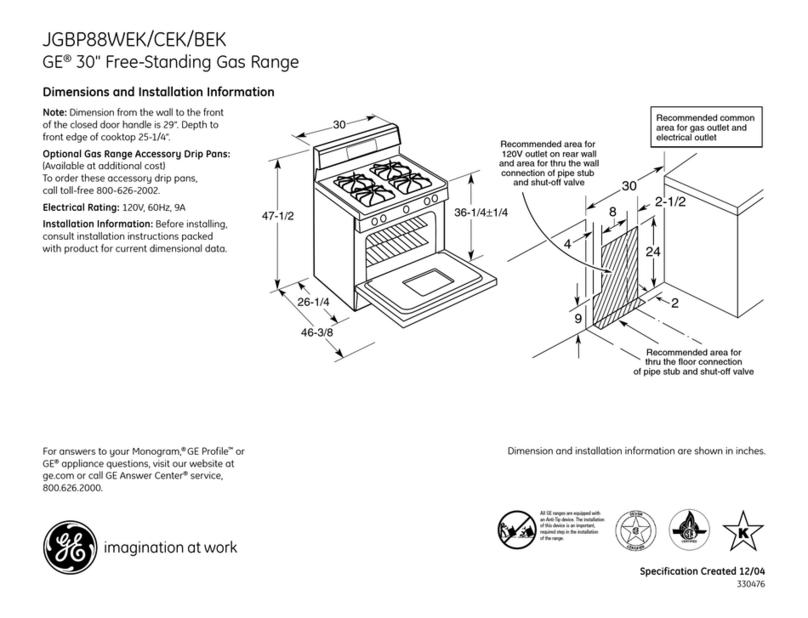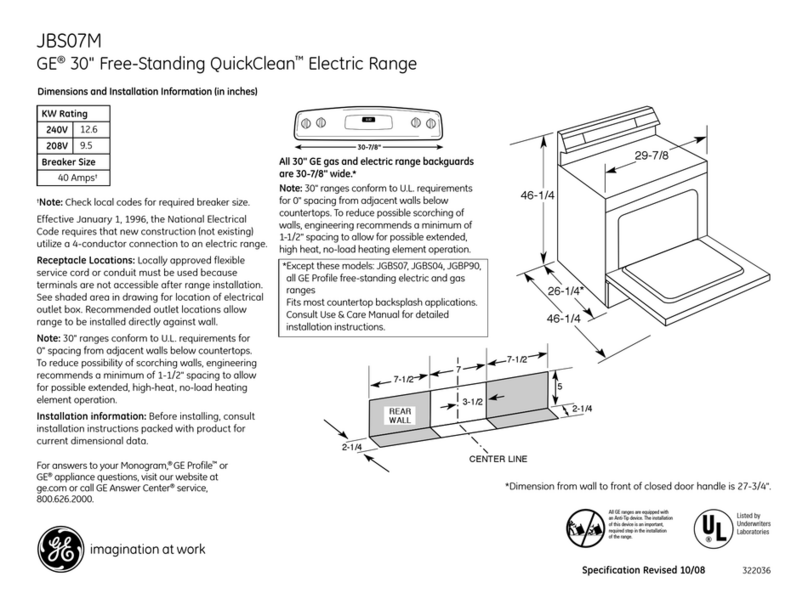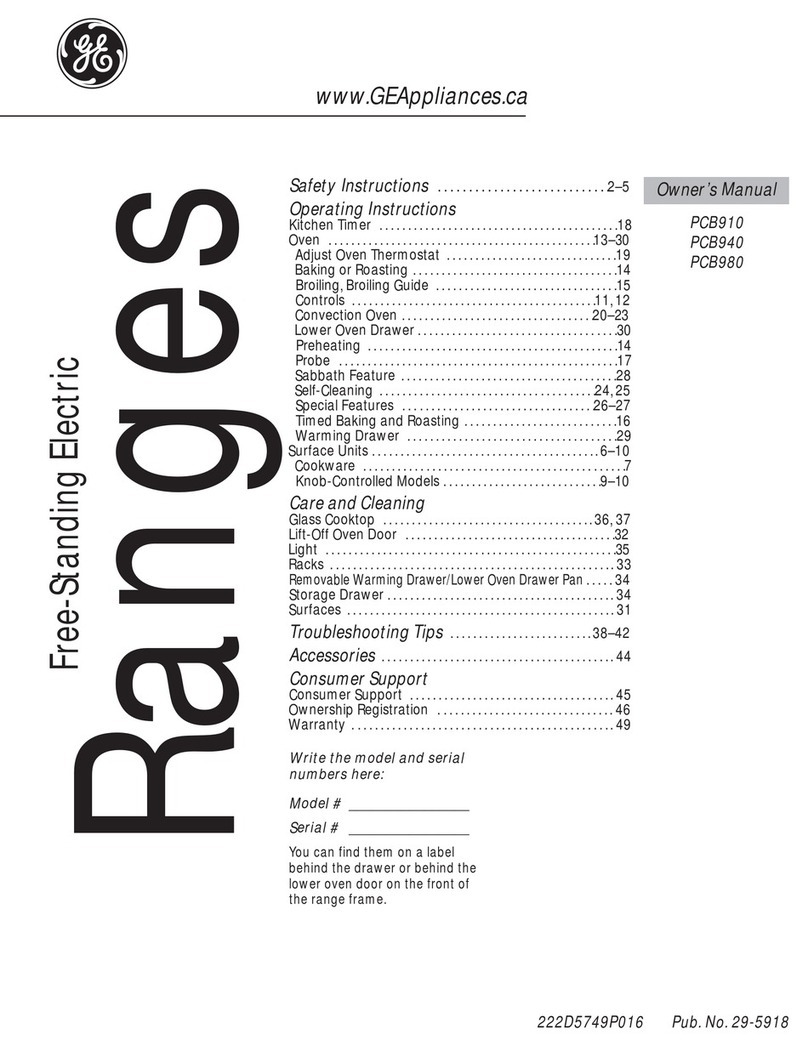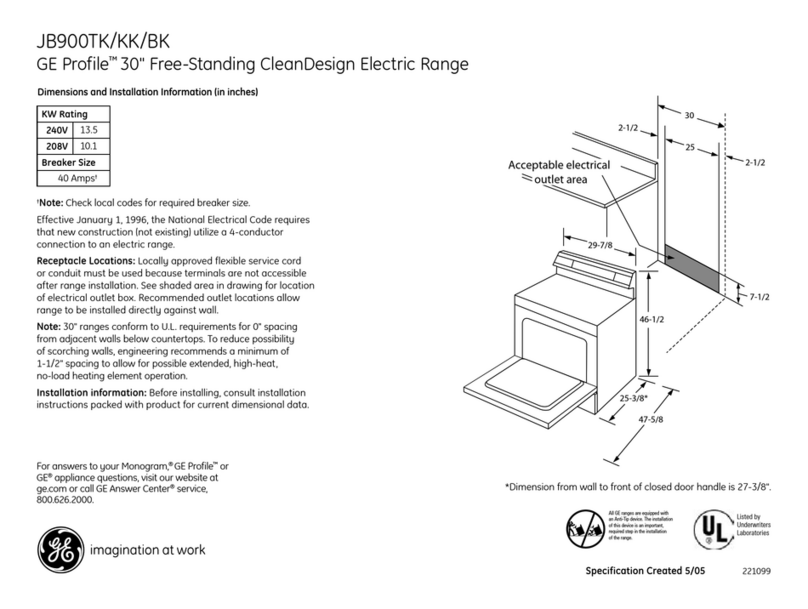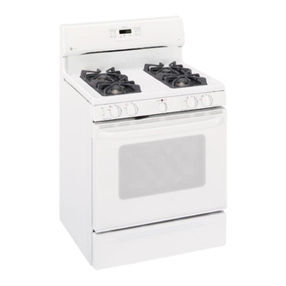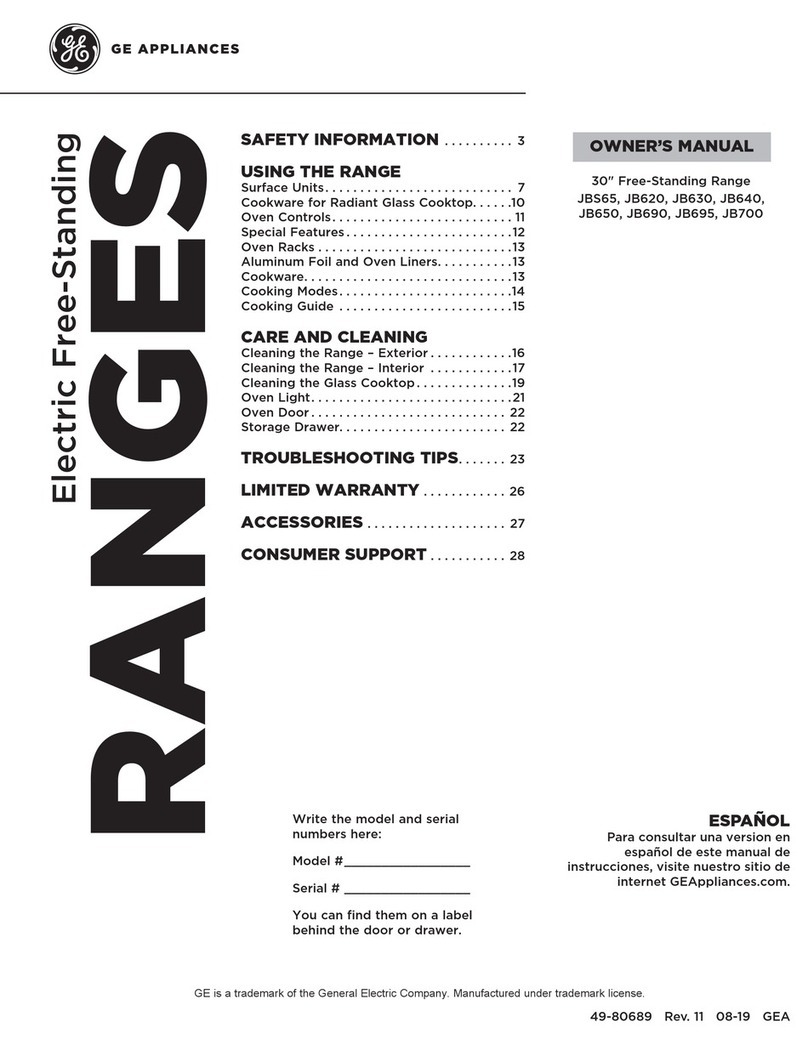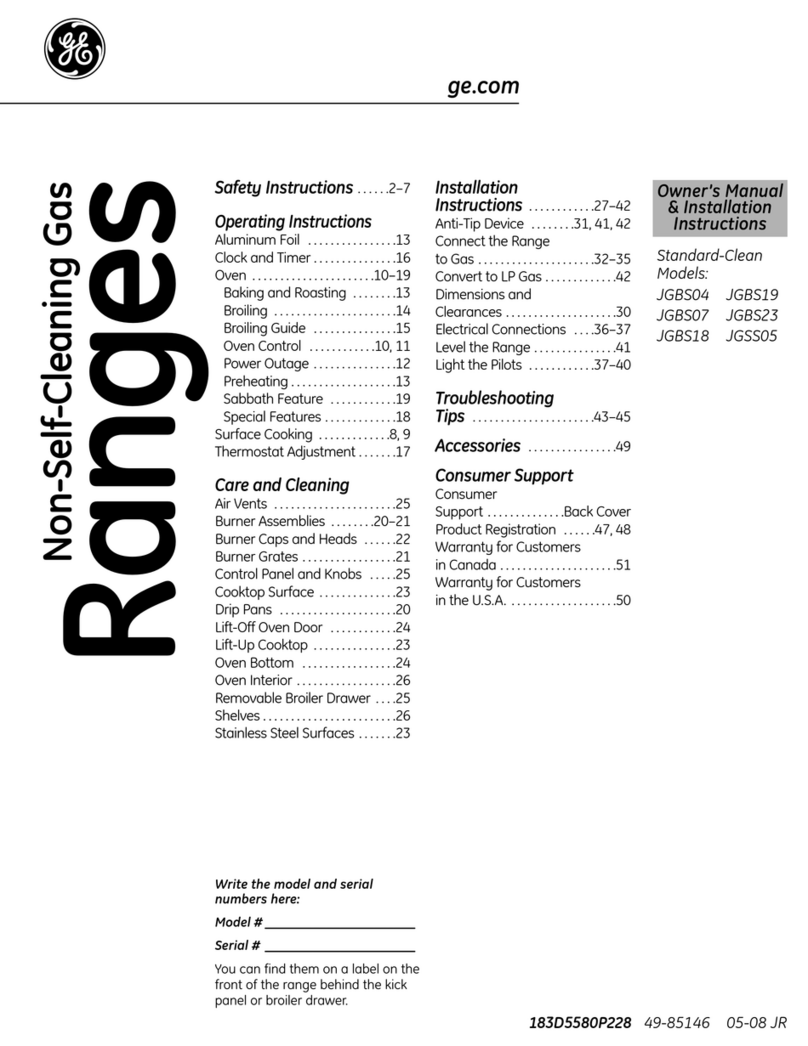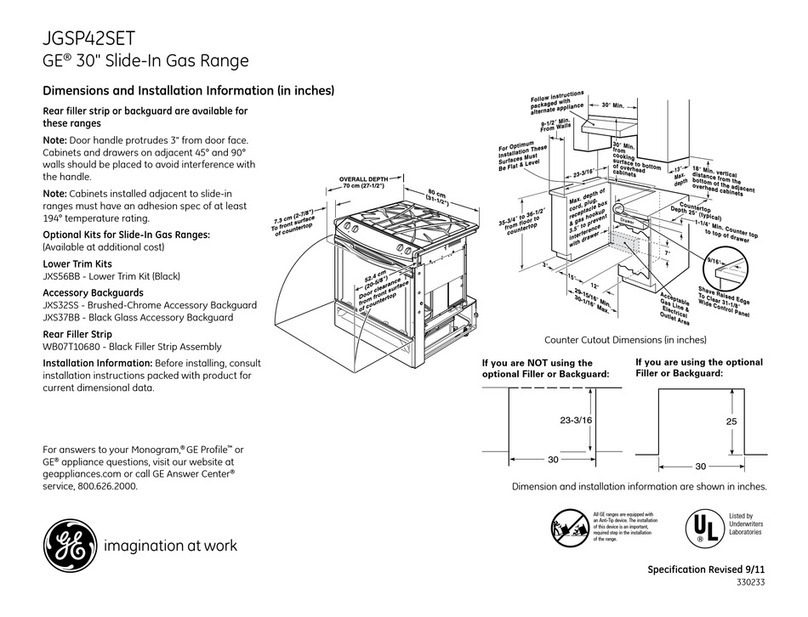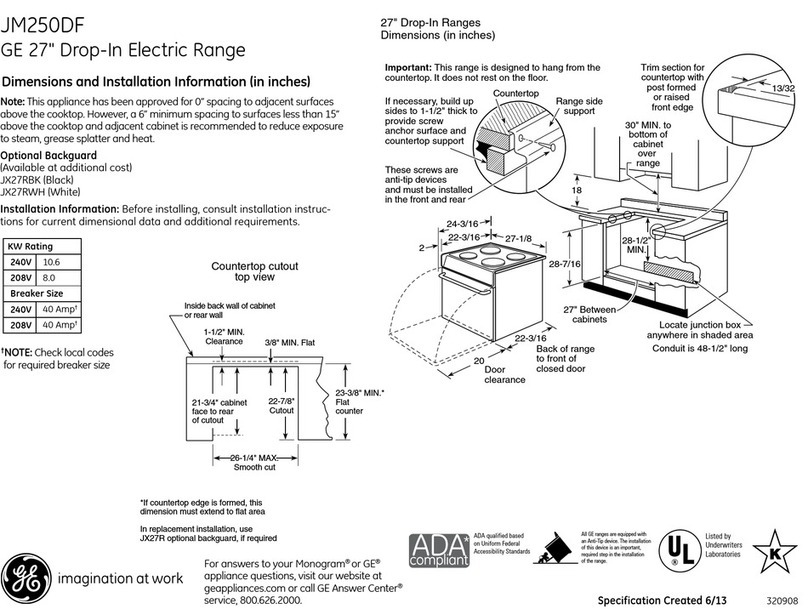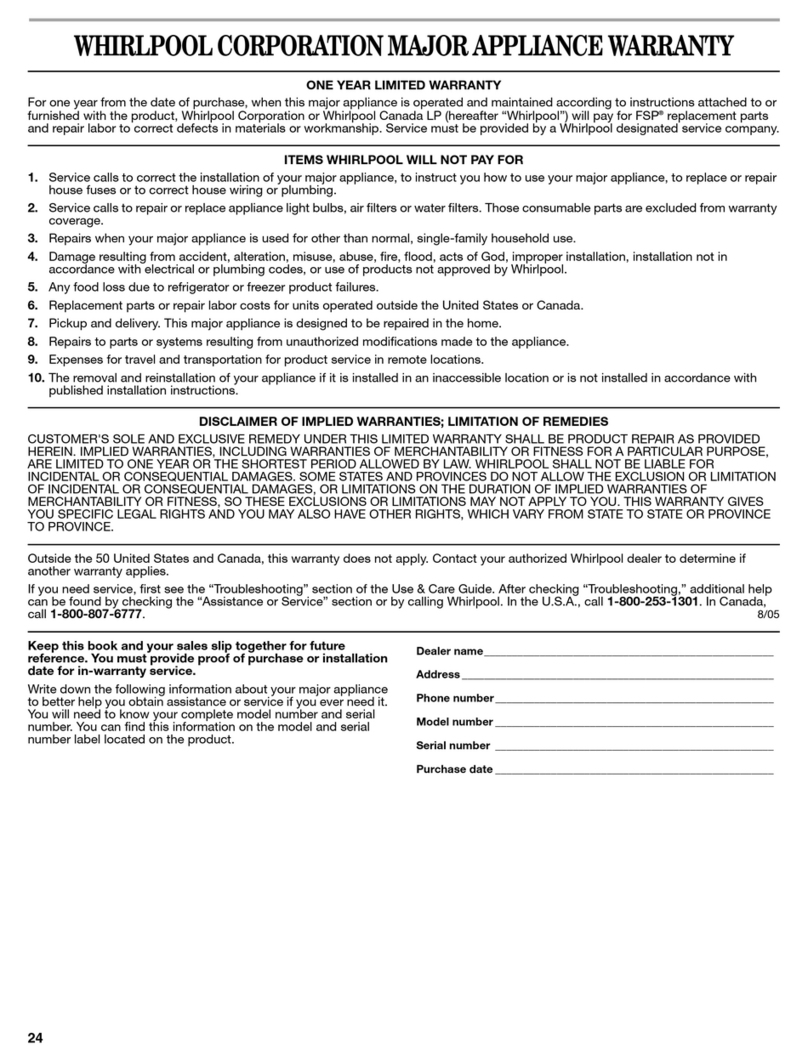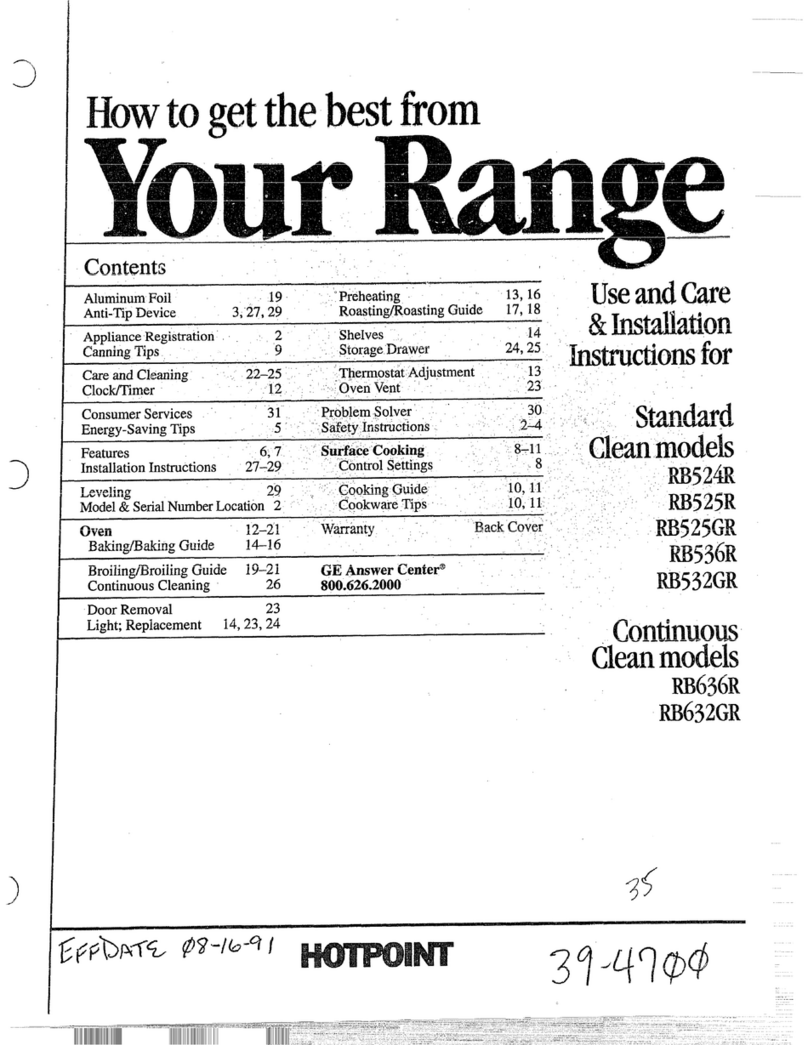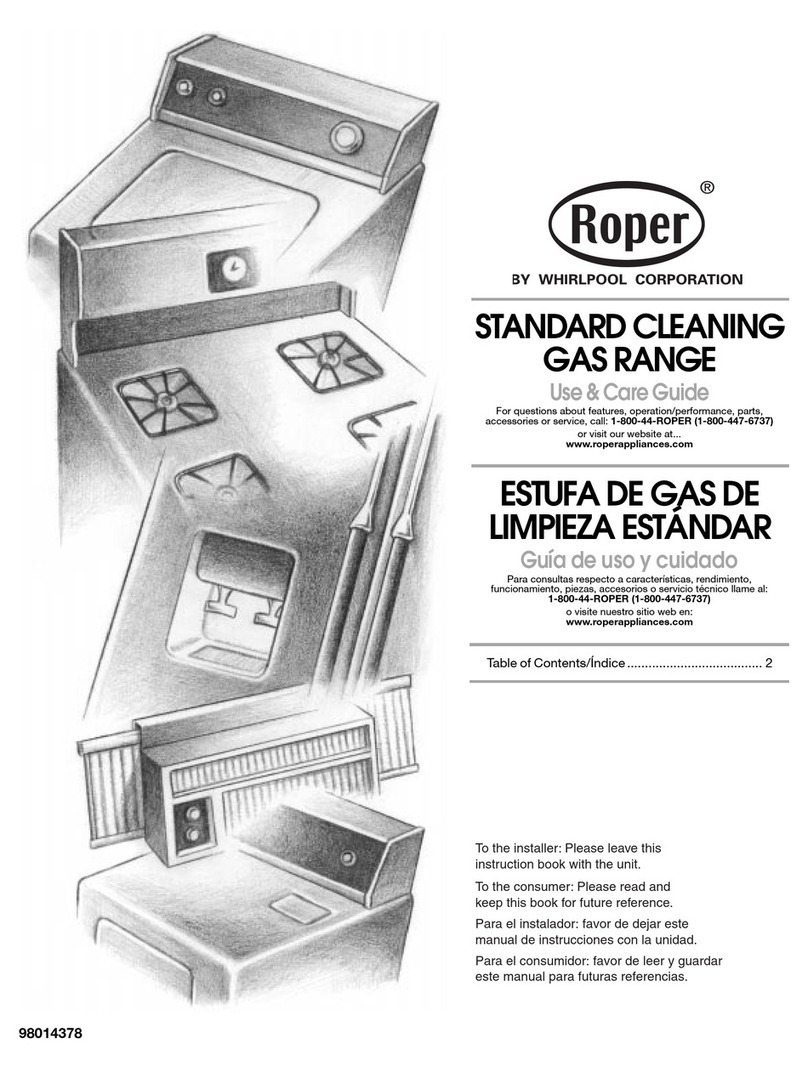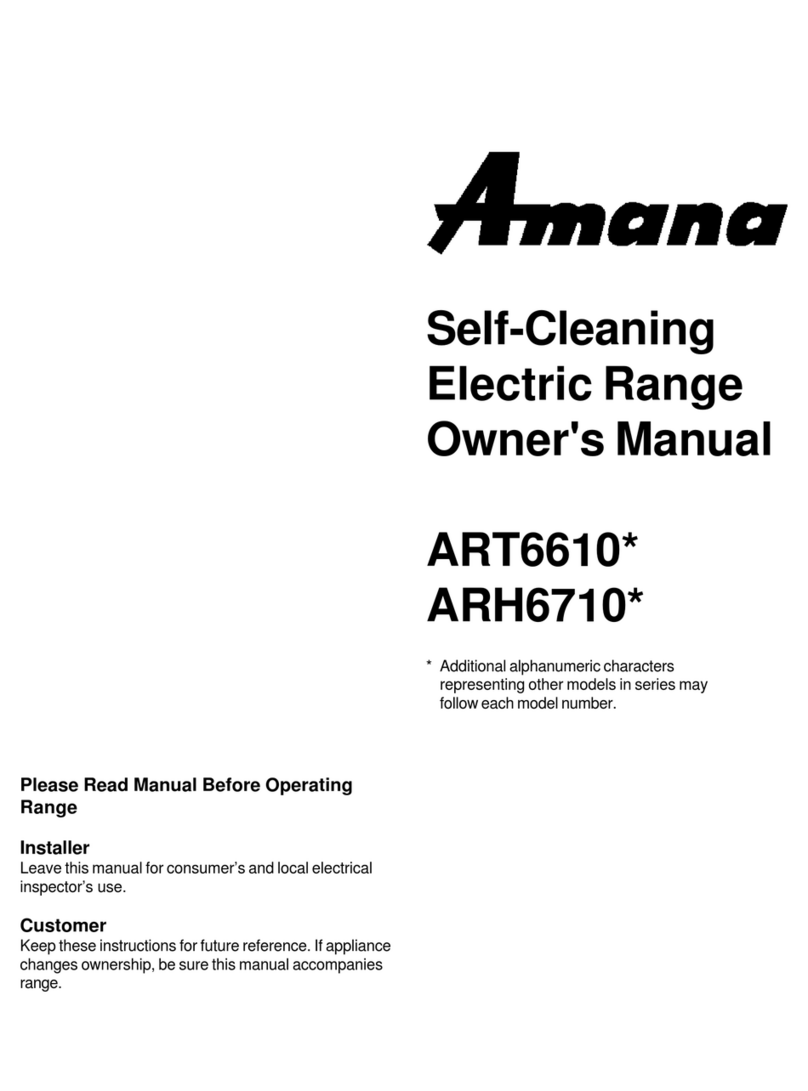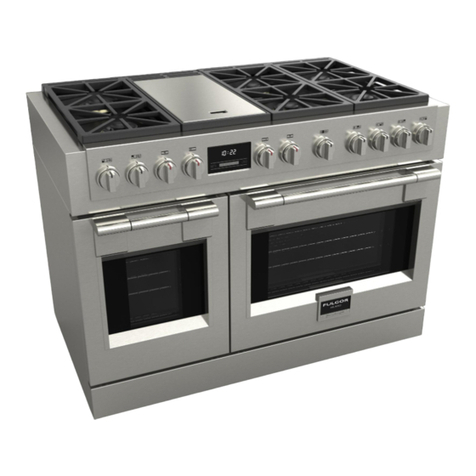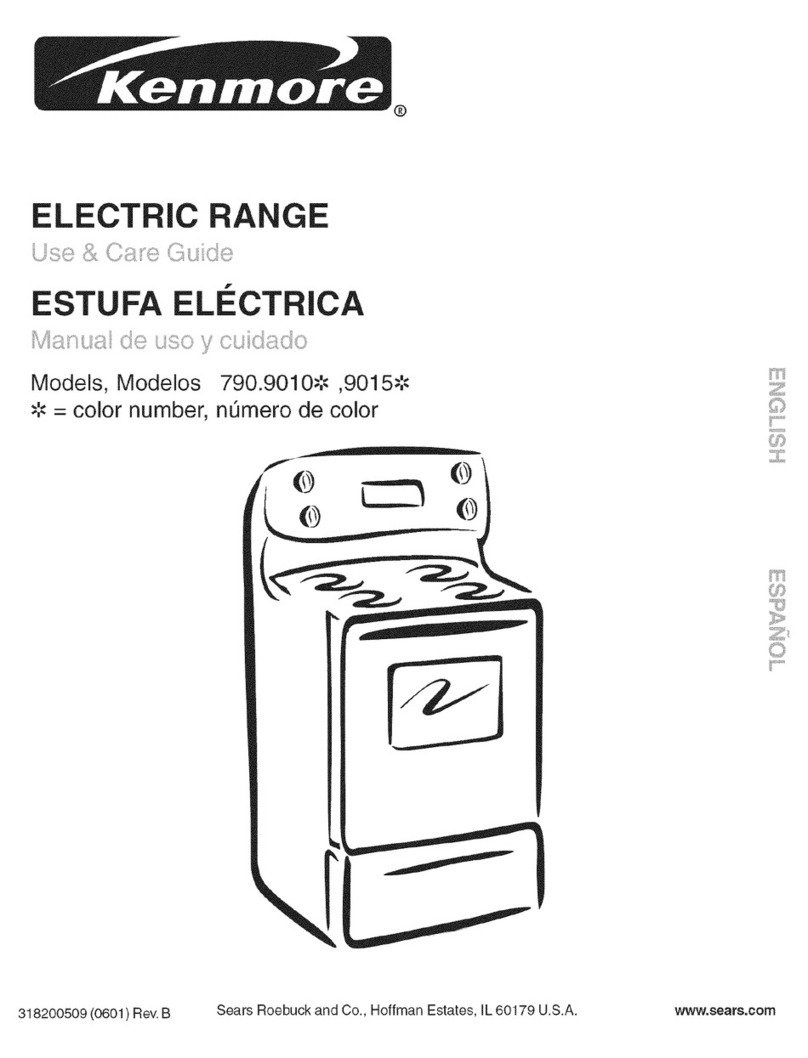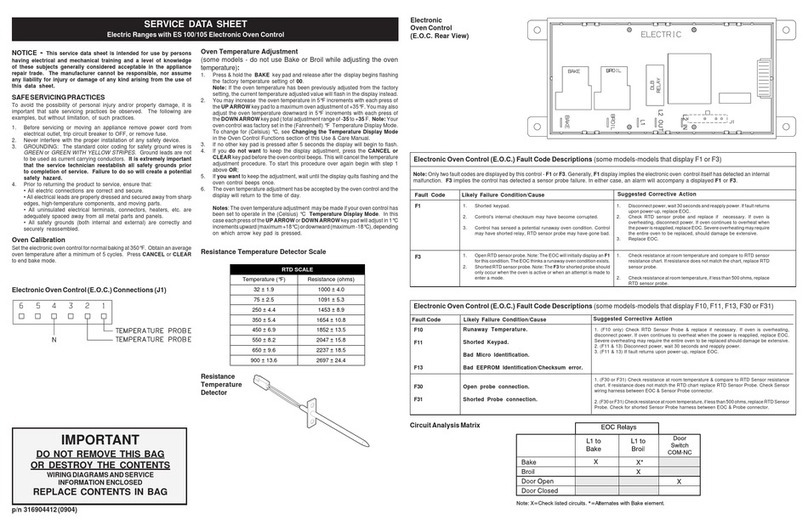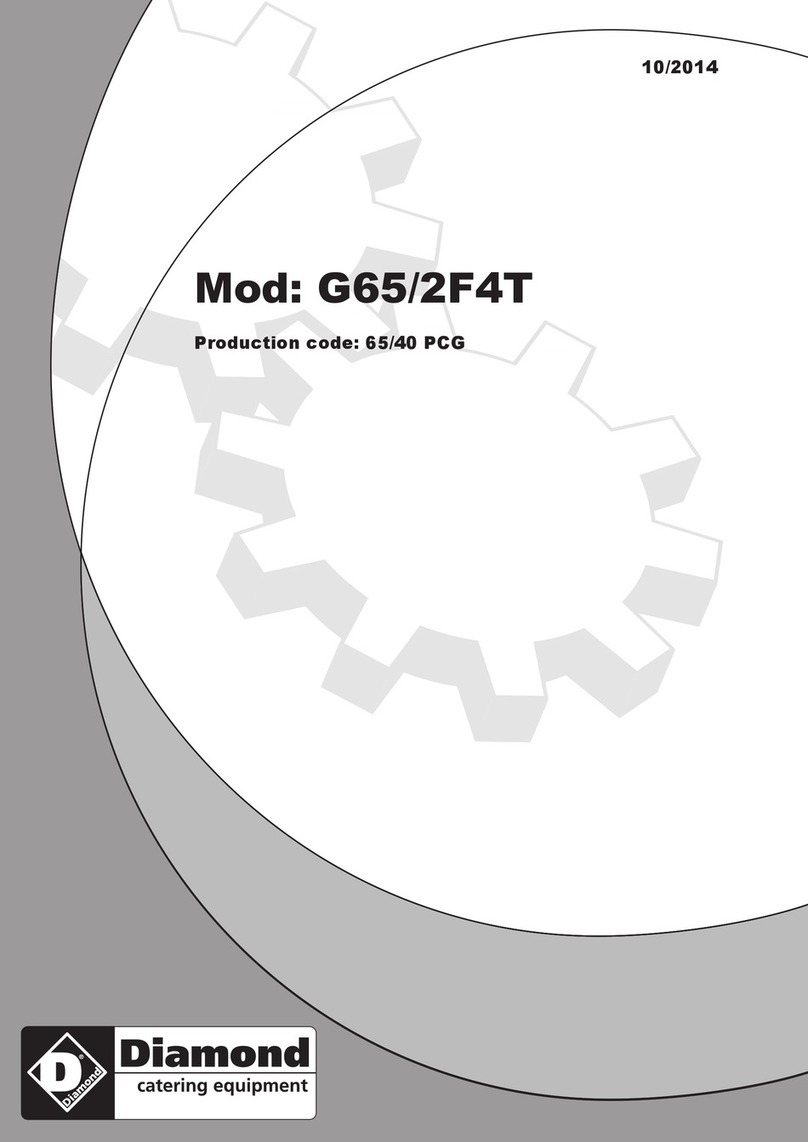4
IMPORTANT SAFETY INFORMATION.
READ ALL INSTRUCTIONS BEFORE USING.
Use proper pan size—select cookware having flat bottoms large enough to cover the surface unit
heating element. The use of undersized cookware will expose a portion of the surface unit to direct
contact and may result in ignition of clothing. Proper relationship of cookware to surface unit will
also improve efficiency.
■Never leave the surface units unattended at
high heat settings. Boilovers cause smoking
and greasy spillovers that may catch on fire.
■Only certain types of glass, glass ⁄ceramic,
earthenware or other glazed containers are
suitable for cooktop service; others may break
because of the sudden change in temperature.
■To minimize the possibility of burns, ignition
of flammable materials and spillage, the handle
of a container should be turned toward the
center of the range without extending over
nearby surface units.
■Always turn the surface units off before
removing cookware.
■Do not flame foods on the cooktop. If you do
flame foods under the hood, turn the fan on.
■Use care when touching the cooktop.
The glass surface of the cooktop will retain
heat after the controls have been turned off.
■Keep an eye on foods being fried at high or
medium high heat settings.
■Foods for frying should be as dry as possible.
Frost on frozen foods or moisture on fresh
foods can cause hot fat to bubble up and
over the sides of the pan.
■Use little fat for effective shallow or deep
fat frying. Filling the pan too full of fat can
cause spillovers when food is added.
■If a combination of oils or fats will be used
in frying, stir together before heating, or
as fats melt slowly.
■Always heat fat slowly, and watch as it heats.
■Use a deep fat thermometer whenever
possible to prevent overheating fat beyond
the smoking point.
■Avoid scratching the glass cooktop. The
cooktop can be scratched with items such
as sharp instruments, rings or other jewelry,
and rivets on clothing.
■Large scratches or impacts to glass doors or
cooktops can lead to broken or shattered glass.
■Do not operate the radiant surface units if the
glass is broken. Spillovers or cleaning solution
may penetrate a broken cooktop and create a
risk of electrical shock. Contact a qualified
technician immediately should your glass
cooktop become broken.
■Never use the glass cooktop surface as a
cutting board.
■The surface units are automatically disabled
during the self-clean cycle. Make sure that all
surface unit controls are turned off at all times
during the self-clean cycle. Any surface unit
that is set to an on position, while the self-clean
cycle is operating, will automatically come on
after the self-clean cycle is finished, and could
result in an on, unattended surface unit. Wait
until the self-clean cycle is finished to set and
use the surface units.
■Do not place or store items that can melt or
catch fire on the glass cooktop, even when it
is not being used, or during the self-clean cycle.
■Be careful when placing spoons or other
stirring utensils on glass cooktop surface when
it is in use. They may become hot and could
cause burns.
■Clean the cooktop with caution. If a wet
sponge or cloth is used to wipe spills on a hot
surface unit, be careful to avoid steam burns.
Some cleaners can produce noxious fumes if
applied to a hot surface.
NOTE: We recommend that you avoid wiping any
surface unit areas until they have cooled and the
indicator light has gone off. Sugar spills are the
exception to this. Please see the Cleaning the glass
cooktop section.
■When the cooktop is cool, use only the
Ceramic Cooktop Cleaner and the Ceramic
Cooktop Cleaning Pad to clean the cooktop.
■To avoid possible damage to the cooking
surface, do not apply cleaning cream to
the glass surface when it is hot.
■After cleaning, use a dry cloth or paper towel
to remove all cleaning cream residue.
■Read and follow all instructions and warnings
on the cleaning cream labels.
■Do not use plastic wrap to cover food. Plastic
may melt onto the surface and be very difficult
to remove.
RADIANT SURFACE UNITS
Consumer Support Troubleshooting Tips Care and Cleaning Operating Instructions Safety Instructions
WARNING!
